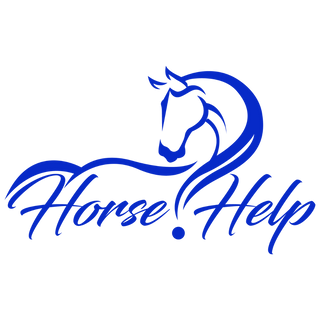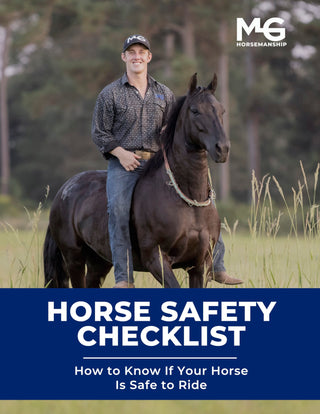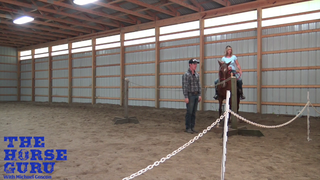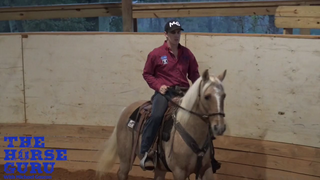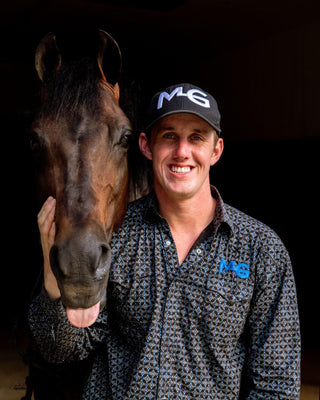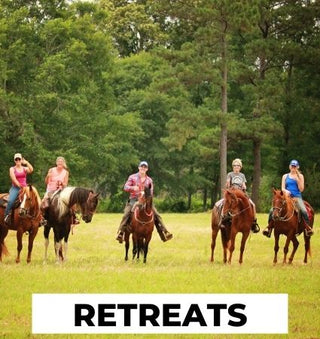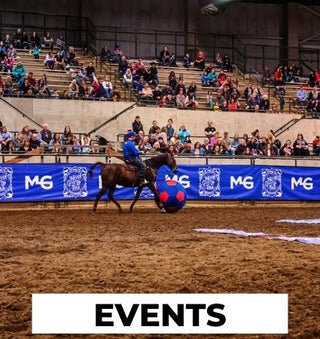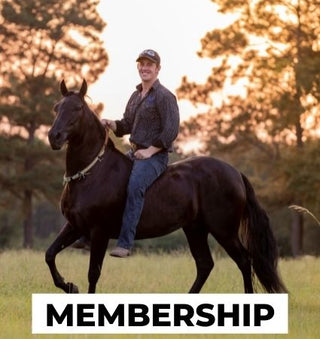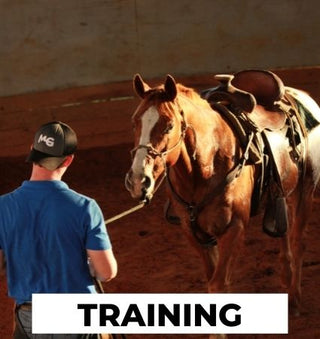Watch the Video Here or continue reading below!
When it comes to progressing through the respect series of horse training, third grade introduces desensitizing in motion and teaching horses how to respond calmly to pressure and fear. In this Q&A session, Michael Gascon answers rider concerns about bucking, spooking, resistance, and building safer, more confident horses.
Desensitization at the Canter: Handling Broncs Safely
One rider asked about a mare who “busted out” at the canter, broncing in a circle when asked to lunge. Michael’s advice was clear:
-
Send them forward, then pull them around.
-
Repeat until softness appears.
Every time a horse bucks or resists, it’s an opportunity to correct from the ground rather than the saddle. The principle is simple: control the head, control the horse.
By sending the horse forward and then pulling them around repeatedly, they begin to soften in the face, relax in the body, and lose the power to buck, rear, or bolt. The goal is for the horse to feel like “butter in the face and butter in the butt”—soft, pliable, and responsive.
What Does Passing 3rd Grade Look Like?
Another rider asked what it means for a horse to “pass” third grade. The answer: it’s not about eliminating fear—it’s about how the horse responds to it.
-
Passing requirement: move your feet and give your face.
-
If the horse can do that consistently, even under pressure, it has passed.
-
An “A student” goes further—able to move shoulders, move the hindquarters, side pass, and leg yield while something scary is on their back.
Essentially, third grade builds directly on first and second grade—teaching the horse to stand still and move willingly while scary stimuli are added.
Resistance Training: The Key to Reliability
Michael emphasized that most riders get hurt not on wild, unstarted horses, but on trained horses that stop paying attention. The fix? Resistance training.
This means intentionally putting the horse in situations where they may resist, then showing them the right response. Examples include:
-
Backing lightly and easily
-
Moving away from pressure without barging into your space
-
Yielding the shoulders and hindquarters
-
Doing all of this when they’re scared—tarps, flags, or unexpected objects nearby
The more a horse learns to respond to pressure when afraid, the more reliable and trustworthy they become outside the arena.
Spooking: Should You Let the Horse Investigate?
One common question was how to handle spooking—should riders let the horse investigate the scary object, flex them away, or ignore it?
Michael explained:
-
Small spooks: If the horse just tenses, let them move on—“let a sleeping dog lie.”
-
Big spooks: If the horse tries to run off and change the path, correct by pulling their head around, disengaging the hindquarters, and facing the object.
-
In the arena vs. on the trail:
-
In an arena, bend the horse away and push the shoulder toward the scary thing.
-
On the trail, always face the fear so the horse can’t bolt into it.
-
The key is not punishing fear itself, but correcting when fear causes the horse to take you off your chosen path.
The “Magical Ghost” Spook
Sometimes horses spook at nothing visible—especially breeds like Arabians that tend to be high-headed. Michael recommends lowering the horse’s head:
-
When the poll drops below the withers, the horse releases endorphins.
-
Endorphins counteract adrenaline, helping the horse relax.
-
A soft rein and a head down cue can prevent escalation of invisible “ghost spooks.”
When Tools Trigger Fear: Flag Stick Example
One rider mentioned their horse bolts when they pick up a flag stick. Michael clarified that the flag stick itself isn’t the problem—it’s a lack of respect for the halter.
The solution: return to first grade groundwork by sending the horse forward, disengaging the hindquarters, and softening the steering wheel. The horse must respect the handler’s cues more than the object it fears.
Trail Riders vs. Arena Riders: Why Respect Matters More
Michael wrapped up by highlighting an important point: trail riders often underestimate their skill. Unlike arena riders who know every inch of their environment, trail riders face the unknown—turkeys, bicycles, tractors, or wildlife.
To stay safe, trail riders must have absolute control of the horse’s head. With that control comes the ability to redirect fear, shut down forward motion, and ride through anything nature throws at them.
Final Thoughts
Third grade in horse training isn’t about eliminating fear—it’s about teaching horses how to respond correctly when fear arises. Through desensitization at the canter, resistance training, and head control, horses learn to stay safe, soft, and reliable no matter the environment.
By practicing these exercises consistently, riders build not only a braver horse but also the confidence to handle unexpected situations on the trail or in the arena.
